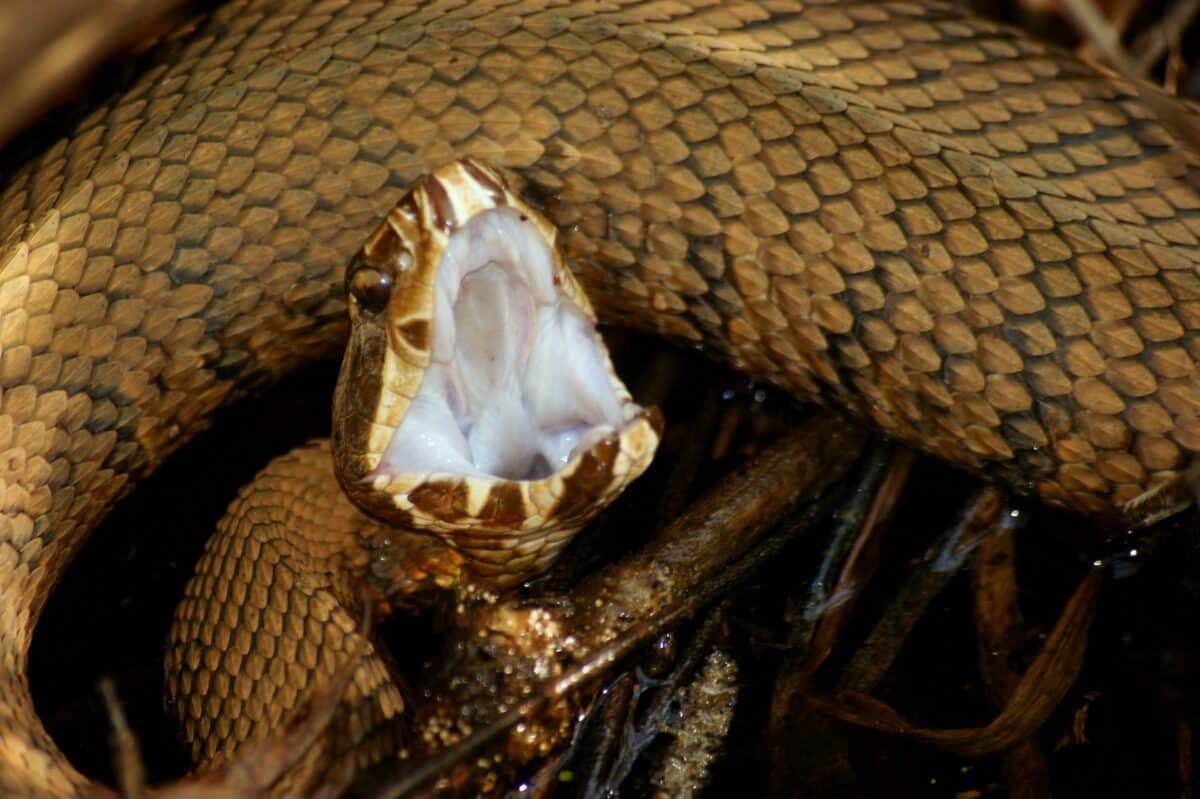With its vast and diverse ecosystems, Texas is home to many intriguing wildlife species. Among these animals are some of the most dangerous creatures in the Lone Star State.
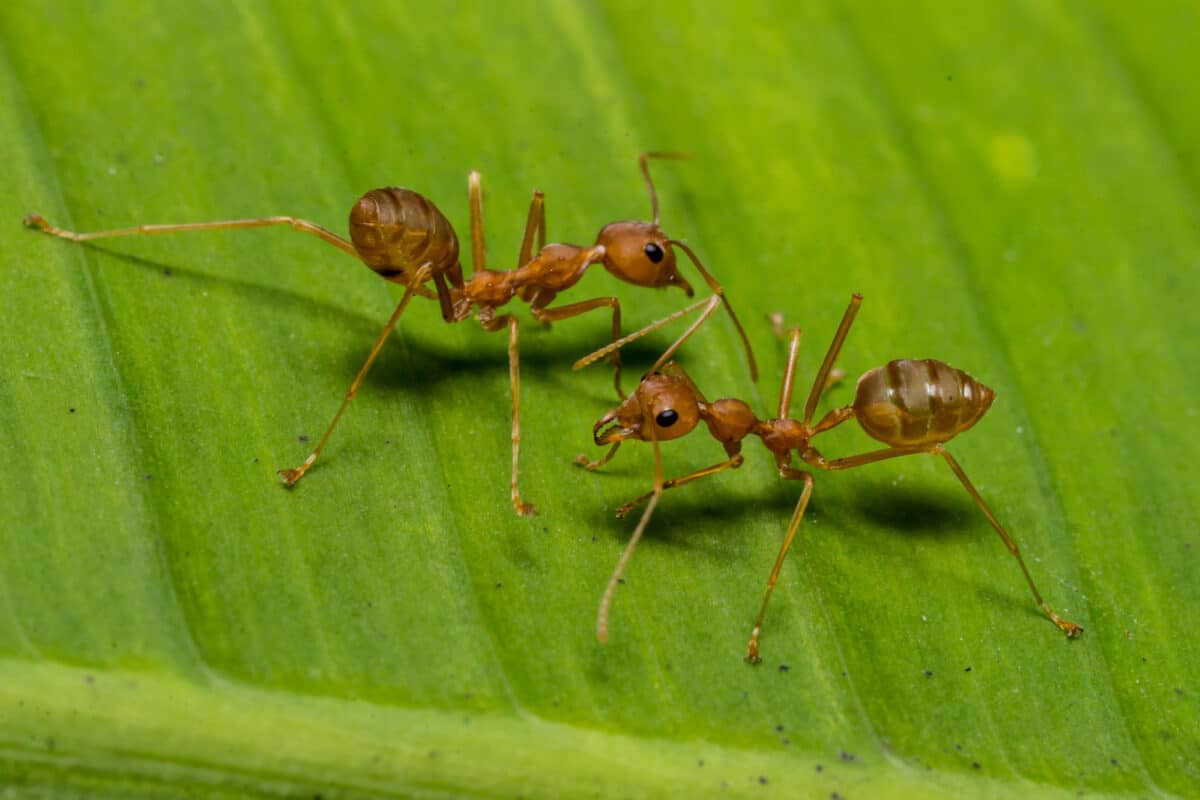
Jump ahead to any section below!
Most Dangerous Animals in Texas
- American Alligator
- Copperhead Snakes
- Kissing Bug
- Western Diamondback Rattlesnake
- Cougars (Mountain Lions)
- Wild Hogs
- Scorpions
- Spiders
- Fire Ants
The American Alligator
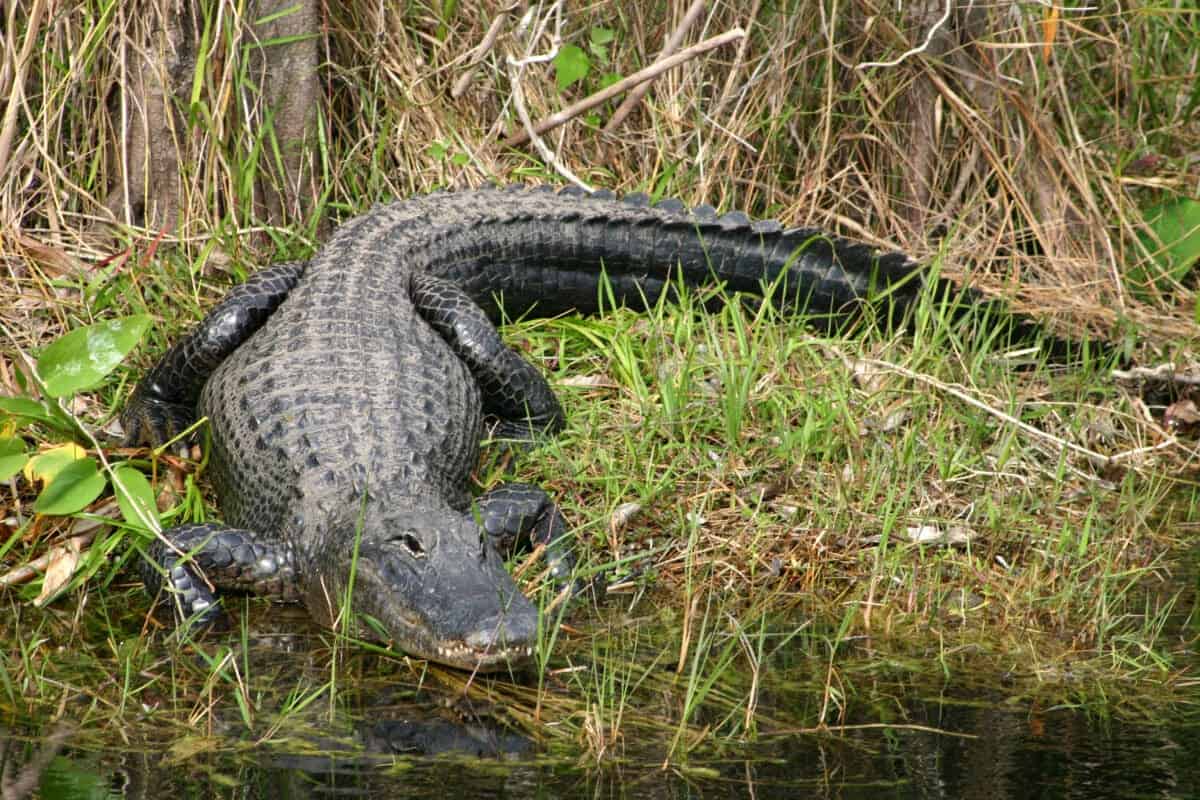
The American alligator is one of the most dangerous animals in Texas, growing up to 20 feet long and weighing up to 2,000 pounds!
Copperhead Snakes

Copperhead snakes are also a major threat, as they are present throughout the state, and their venom can cause severe injury or death if not treated quickly enough.
The Kissing Bug
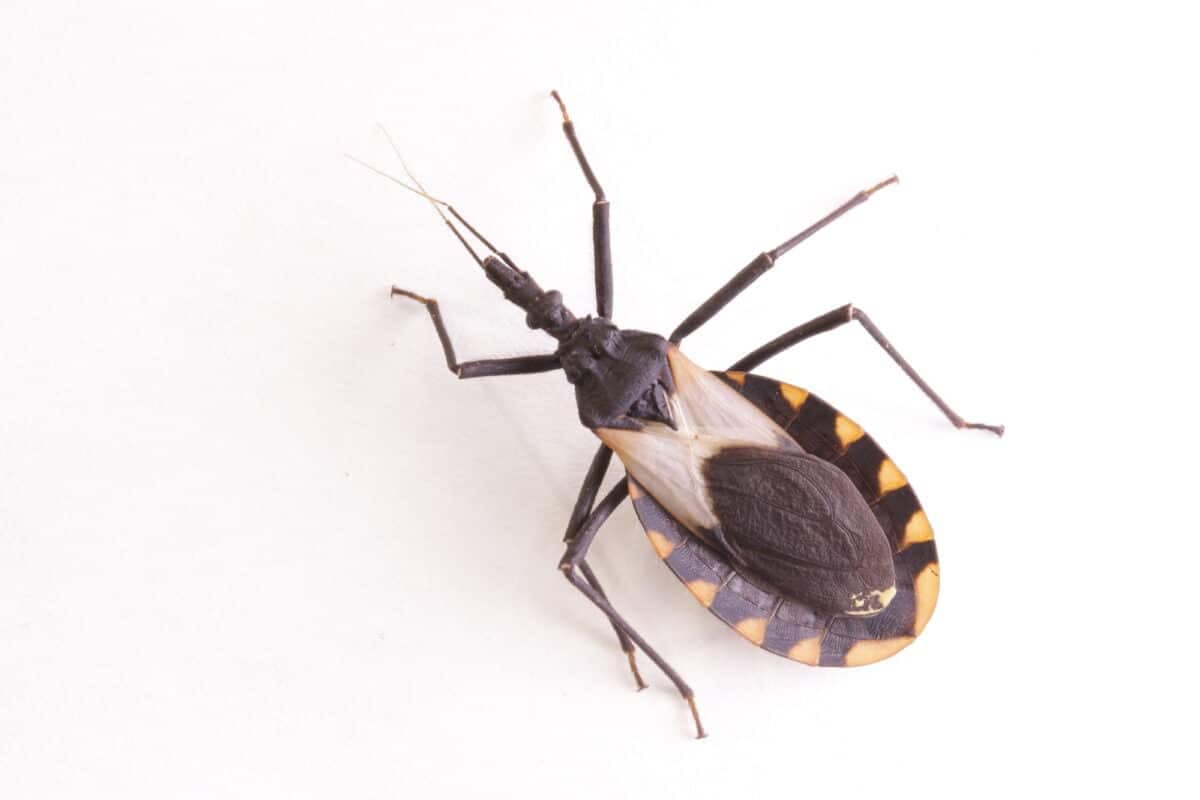
The Kissing Bug is another creature that should be avoided at all costs; its bite can transmit Chagas disease, which can be fatal if left untreated for too long.
Check out: The Tables Turn: Watch As The Tortoise Outsmarts The Eagle.
The Western Diamondback
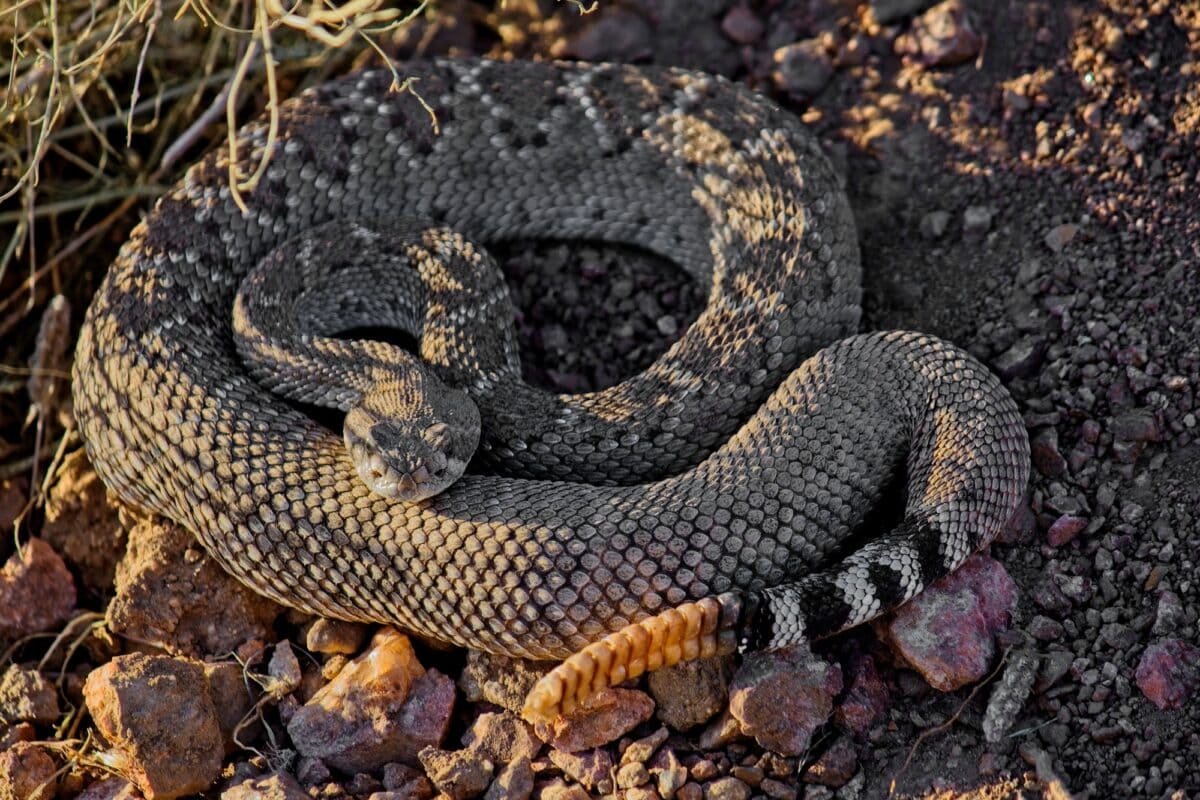
The Western Diamondback Rattlesnake is also a deadly animal found in Texas; its venomous bite can cause severe pain and even death if not treated immediately with antivenom medicine.
Cougars
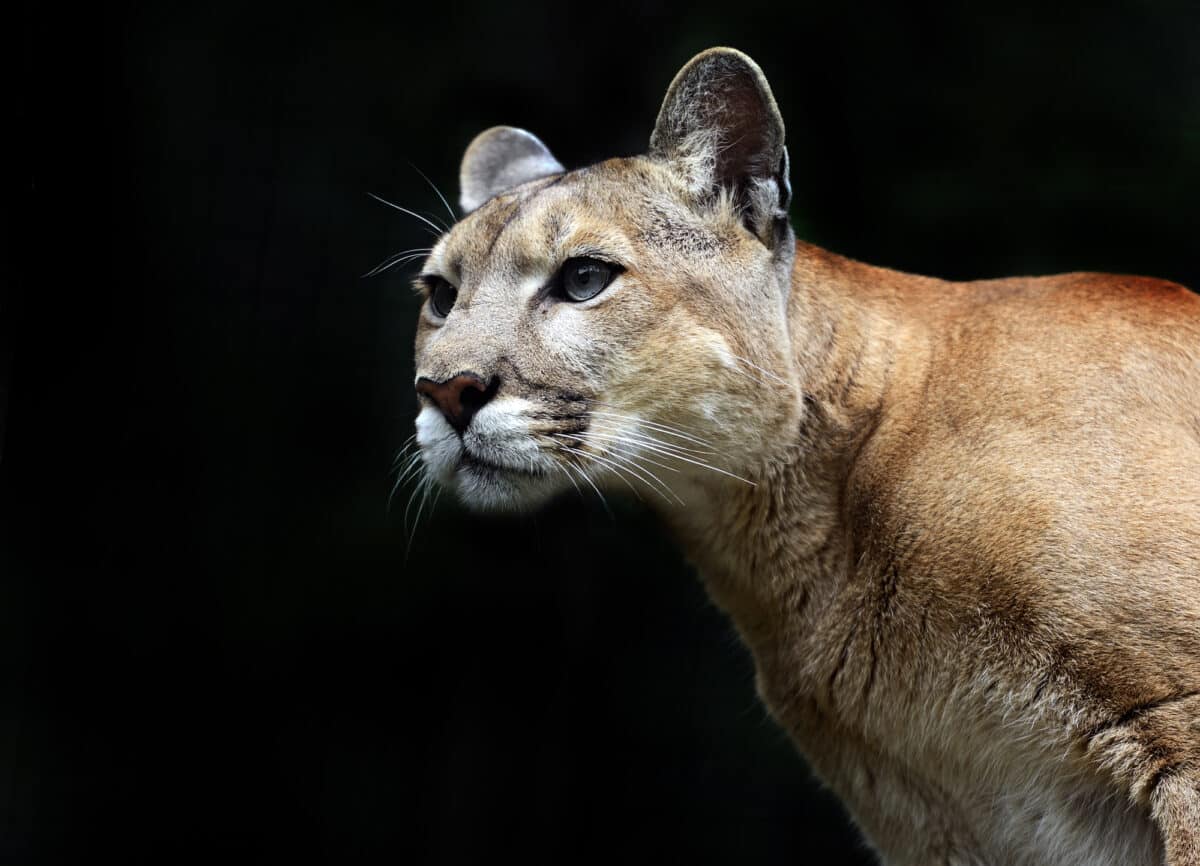
Cougars (or mountain lions) are also a danger to humans. However, they usually avoid contact with people; but may attack when provoked or threatened by humans or other animals in their territory.
Wild Hogs
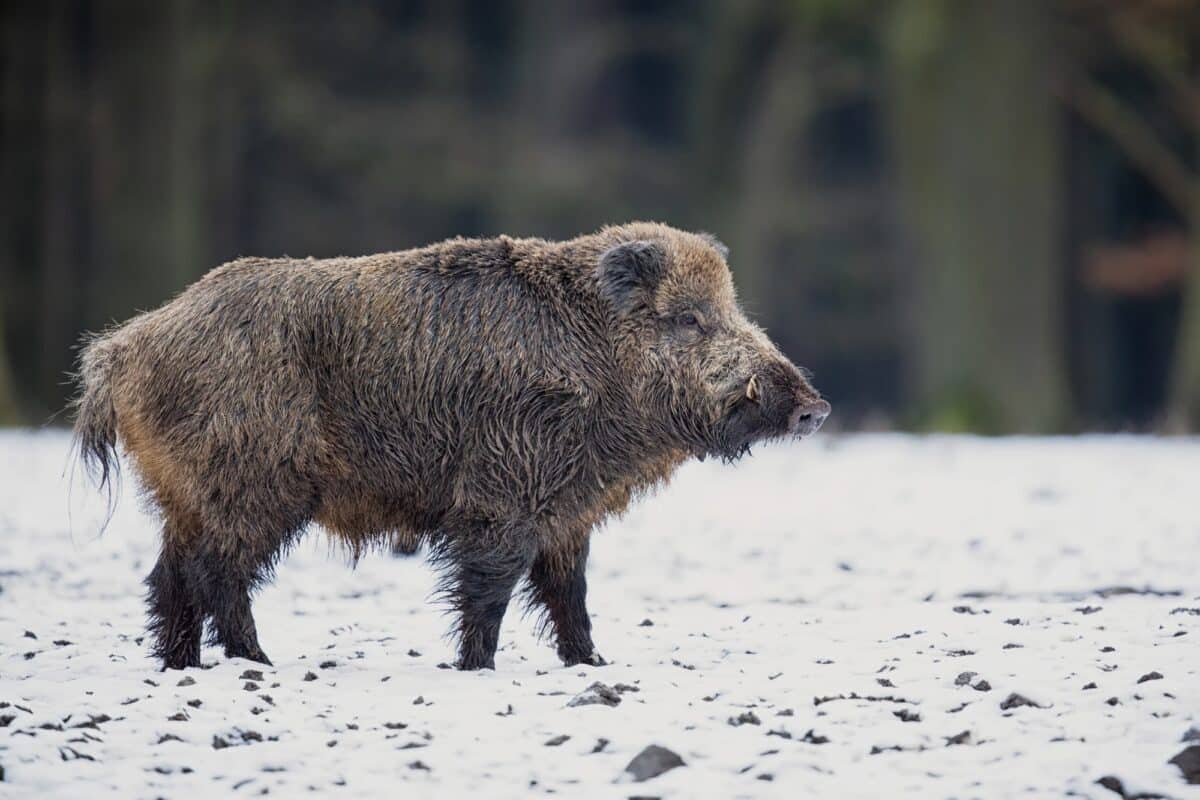
Wild hogs are another animal that should be avoided due to their sharp tusks and aggressive behavior when threatened or cornered; they can weigh up to 400 pounds!
Check out: The Alaskan Husky.
Scorpions, Spiders, and Fire Ants
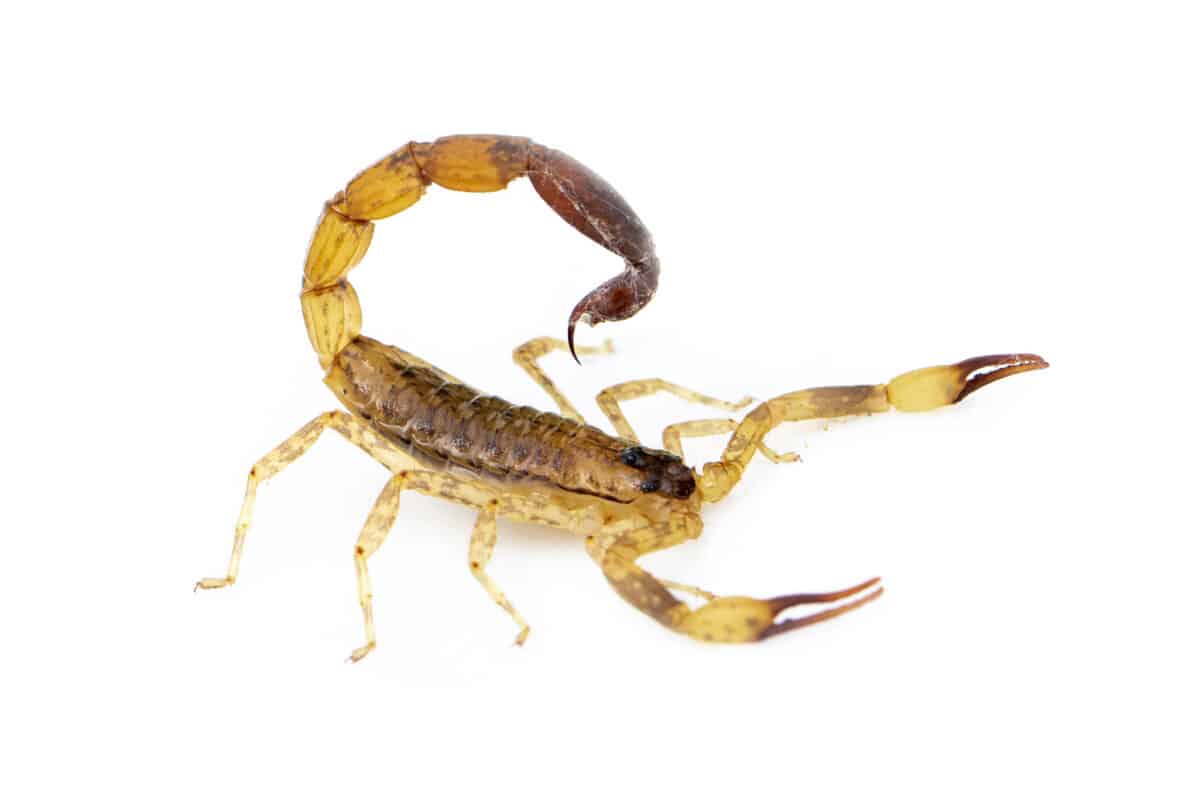
Scorpions, spiders, and fire ants are also common in Texas; their painful stings or bites can cause allergic reactions in some people that may require medical attention if not treated quickly enough.
Check out: Discover Texas’s Western Diamondback Rattlesnake.
Venomous Snakes
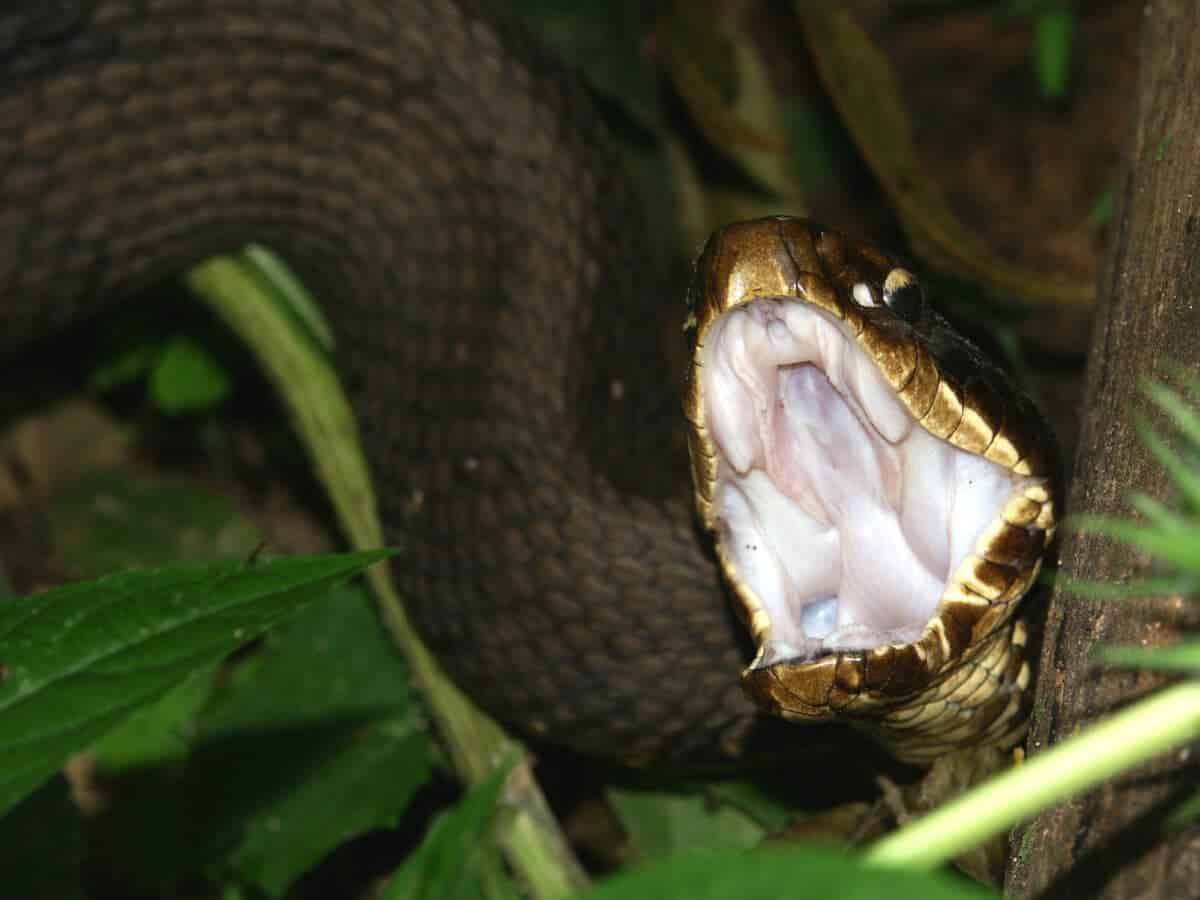
Venomous snakes are a reality in Texas, and it is important to be aware of the various species in the region. Copperheads, Cottonmouths (Water Moccasins), Rattlesnakes, and Coral Snakes are the principal venomous snake species in Texas.
The Copperhead snake is a common venomous snake found in Texas. It has a reddish-brown color with chestnut-colored crossbands down its body and a copper-colored head. This species can reach lengths of up to three feet and prefers habitats such as woodlands rocky hillsides, and is found near streams or rivers. Copperheads are relatively docile snakes but will strike if threatened or provoked.
Taking precautions when encountering any venomous snake is vital, as their bites can cause severe injury or even death if not treated promptly. If you encounter one of these creatures, it is best to stay away from them and leave them alone, as they pose no threat unless provoked or disturbed. If a venomous snake bites you, seek medical attention immediately, as antivenom may be necessary for treatment.
Carnivorous Mammals
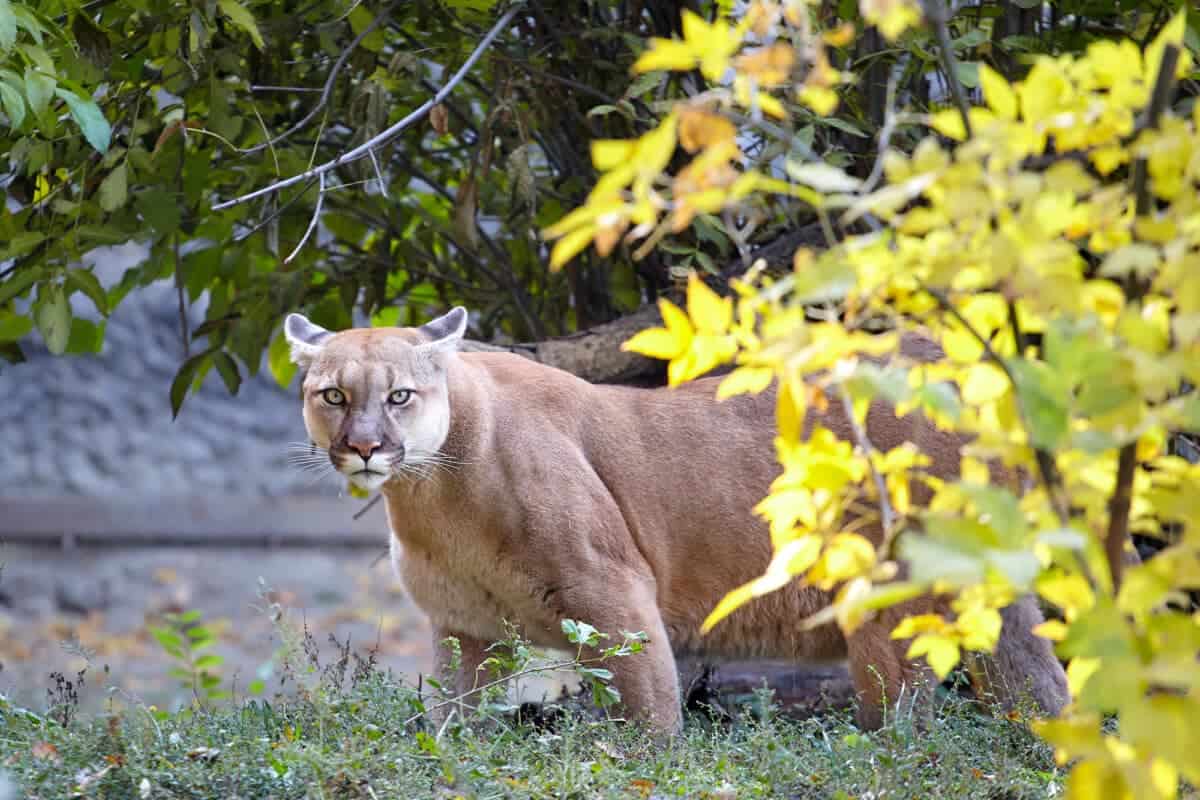
Texas is home to various carnivorous mammals, from the elusive mountain lion to the aggressive wild boar. Texas’s most common carnivorous mammals are the mountain lion, cougar, or puma.
These large cats are found mainly in rugged mountains and sometimes in forests and swamplands. It feeds on large and small mammals, especially deer, making it an important predator in the food chain. Mountain lions are elusive creatures and usually avoid humans, but they can be dangerous if encountered.
The wild boar is another dangerous carnivore found in Texas. These highly aggressive animals may attack humans when provoked or threatened. They can cause significant damage to ecosystems by rooting up plants and destroying habitats for other species. Wild boars compete with other animals for food sources, such as fruits, nuts, insects, and small mammals.
If you encounter any of these dangerous carnivores while out in nature, it’s important to remain calm and not provoke them. Ensure you keep a safe distance between yourself and the animal; never approach or try to feed them if you feel threatened by a wild animal; back away slowly while keeping your eyes on the animal until it leaves the area.
Insects and Arachnids
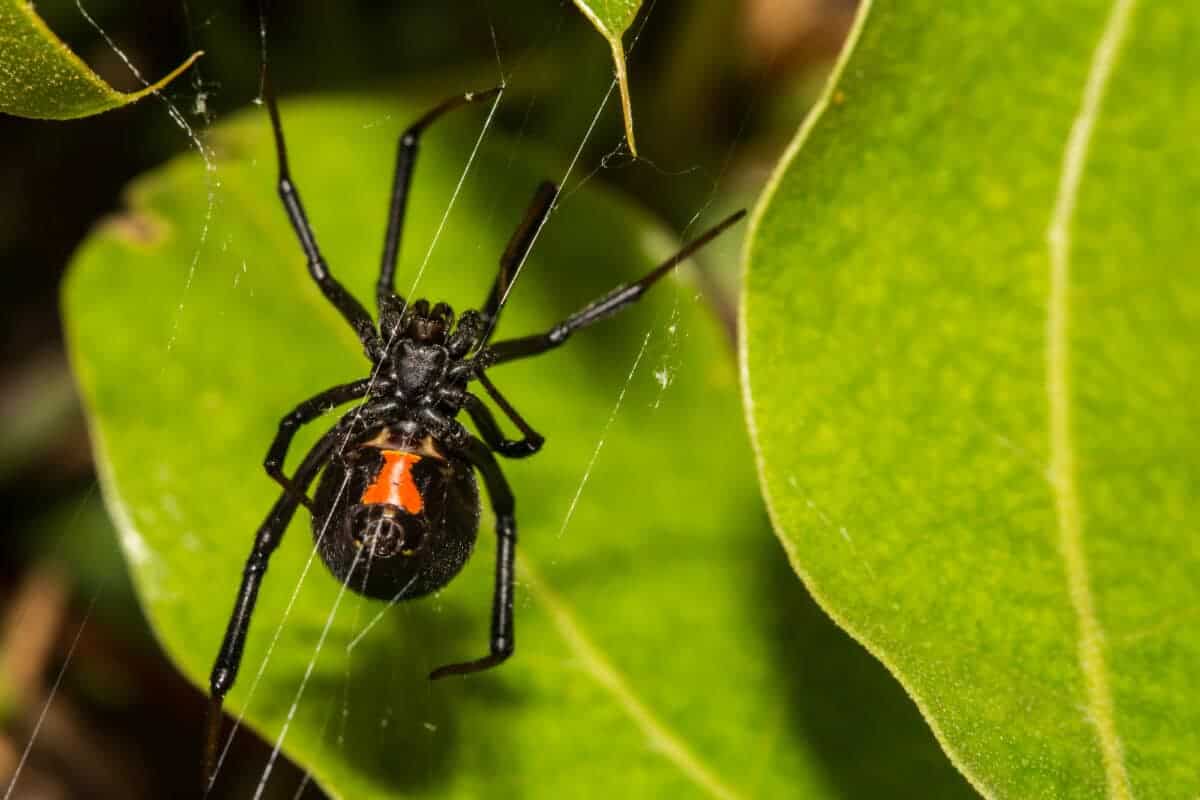
Insects and arachnids are a common sight in Texas. From the tiny, harmless house spider to the fierce Red Harvester Ant, these creatures are everywhere around the state.
However, some of these insects and arachnids can be dangerous. Two groups of spiders in Texas are considered poisonous to humans: black widows and recluse spiders.
To avoid encounters with these creatures, it’s important to take safety measures such as wearing protective clothing outdoors. Additionally, avoid areas where they may live, like wood piles or dark corners of your home or garage. Lastly, suppose you encounter one of these creatures. In that case, it’s important not to panic and to remain calm. Then you can safely remove yourself from the area without getting bitten or stung.
It’s also important to educate yourself about these creatures so you know how to identify them and what safety measures to take if you do come across one.
Many resources are available online, such as the Texas Parks & Wildlife Department website, which provides information on spiders and their kin and field guides for identifying common insects in Texas.
Additionally, websites such as Outforia provide helpful identification guides for common spiders in Texas and pictures so you can easily recognize them if spotted outdoors or in your home.
By taking safety measures and educating yourself about dangerous insects and arachnids in Texas, you can help protect yourself from potentially harmful encounters with these creatures while still enjoying all that nature has to offer!
Aquatic Threats
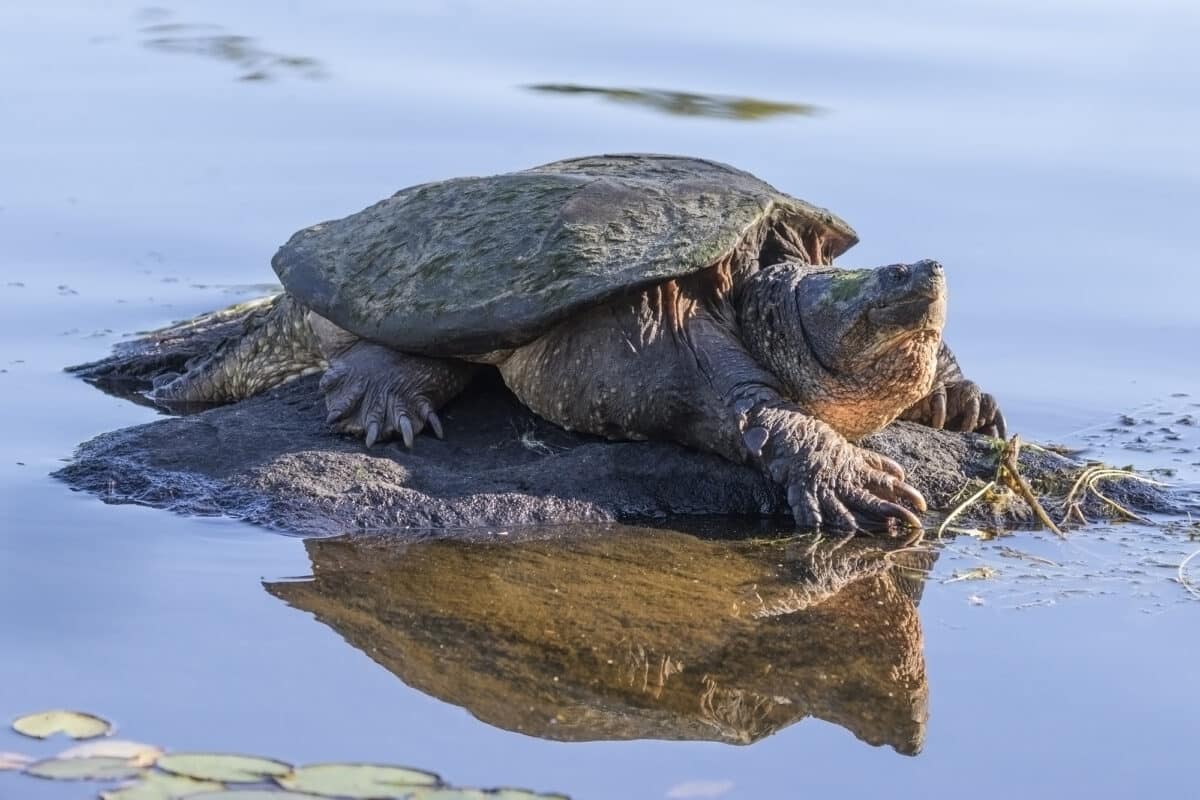
The aquatic environment in Texas is home to a variety of dangerous animals. From the aggressive Alligator Snapping Turtle to the venomous Cottonmouth snake, there are many potential threats to be aware of when swimming or boating in Texas waters.
Also, the Alligator Snapping Turtle is one of Texas’s most aggressive aquatic species. It has a large head, and powerful jaws that can easily crush its prey. The turtle also has a long tail with three rows of spikes, a weapon against predators. This turtle will not hesitate to attack humans or other animals when provoked.
Another deadly animal that might be found in Texas lakes is the cottonmouth snake. This poisonous snake has striking black and white stripes running the length of its body. It can also reach lengths of three feet.
Safety measures must be taken when swimming or boating in Texas waters. Avoid swimming alone or at night, and always wear a life jacket near deep water. Keep an eye out for any danger signals, like snakes or turtles, and be mindful of your surroundings. Keep cool and carefully retreat from the area if you encounter an aggressive animal until it leaves.
There are many potential threats when swimming or boating in Texas waters. Following safety precautions such as wearing life jackets and avoiding swimming alone can help ensure your safety while enjoying the aquatic environment.
Key Points
| American Alligator, Copperhead Snakes, Kissing Bug, Western Diamondback Rattlesnake, Cougars (Mountain Lions), Wild Hogs, Scorpions, Spiders, and Fire Ants are among the most dangerous animals in Texas. |
| Venomous snakes, including the Western Diamondback Rattlesnake and Copperhead Snakes, pose a significant threat in Texas, and precautions should be taken to avoid bites and seek immediate medical attention if bitten. |
| Carnivorous mammals such as mountain lions and wild boars can be dangerous when threatened or provoked, and it is important to maintain a safe distance and avoid interaction with them. |
| Some insects and arachnids in Texas, like black widow spiders and Red Harvester Ants, have venomous bites or stings, and it’s crucial to take safety measures to avoid encounters and seek medical attention if necessary. |
| Aquatic threats in Texas include aggressive Alligator Snapping Turtles and venomous Cottonmouth snakes. When swimming or boating in Texas waters, taking safety precautions and being aware of potential dangers is important. |
| Promoting awareness, respecting wildlife, and practicing responsible behavior when encountering dangerous animals in Texas are essential to ensuring the safety of both humans and wildlife. |
Wrap Up
Finally, we must promote awareness and respect for Texas wildlife so that future generations can enjoy its beauty and diversity. We must remember that we share this land with many other species and that our responsibility is to ensure their safety and well-being.
By following responsible behavior guidelines when encountering wild animals in their natural habitats, we can help ensure they remain safe from harm while allowing us all to appreciate their beauty.
If you enjoyed this article as much as me, see below for our related animal article links!
Next up:
- Discover San Francisco’s Most Dangerous Animals
- Unearth the Reality of Florida’s Venomous Spiders
- Great White Shark Vs. Bull Shark
- Michael Phelps Vs. Dolphin: A Race For Aquatic Supremacy
- Eagle’s Aerial Acrobatics: The Hawk Becomes The Hunted
Join our Forum for free today!

- Huge Pet Bison Breaks Into House - July 22, 2024
- Giant Black Bear Surprises Beachgoers by Emerging from the Ocean in Florida - July 22, 2024
- Brave Man Plays Instrument While Huge Bear Caresses His Shoulder - July 22, 2024

